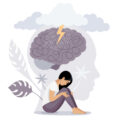As a teacher, staying organised and managing tasks efficiently is crucial to ensuring a productive and successful classroom environment. With the demands of lesson planning, grading, and other administrative responsibilities, it can be challenging to keep everything in order and maintain a high level of productivity. That’s why implementing effective organisational techniques is essential for teachers.
In this blog post, we will explore various organisational techniques that can streamline tasks and boost productivity for teachers. From prioritisation and planning to delegation and technology integration, we will delve into strategies that can help teachers stay organised and accomplish their daily tasks more efficiently.
We will begin by highlighting the importance of prioritisation and how it can help teachers focus on the most important tasks at hand. Next, we will discuss the significance of planning and scheduling, providing tips on how to effectively manage time and create a structured workflow.
Delegation is another key aspect of effective task management, and we will explore how teachers can delegate responsibilities within the classroom to maximize efficiency and create a collaborative environment.
Additionally, we will delve into the role of technology in task management and discuss how teachers can leverage educational apps and digital tools to streamline their workflow and save valuable time.
Boosting productivity goes hand in hand with organization, and we will explore strategies to create a productive classroom environment. From streamlining grading and assessment processes to implementing time-saving techniques for lesson planning, we will provide practical tips and suggestions.
We will also discuss the importance of organising physical and digital resources, including effective storage solutions for classroom materials and creating systems for tracking resources. Furthermore, we will explore how cloud storage can be utilized for efficient resource management.
Maintaining organisation and productivity is an ongoing process, and we will guide you on regularly reviewing and adjusting organisational techniques. We will also discuss the significance of maintaining a healthy work-life balance and the benefits of continued professional development in enhancing organisational skills.
Lastly, we will emphasise the importance of staying updated with the latest organisational tools and techniques, ensuring that teachers have access to the most effective resources available.
By implementing these organisational techniques, teachers can streamline their tasks, reduce stress, and ultimately create a more productive and efficient classroom environment. So, join us as we explore the world of organisational techniques for teachers and discover how you can boost your productivity and achieve your teaching goals.
Understanding the Importance of Organisational Techniques for Teachers
Teachers are often faced with a myriad of tasks and responsibilities that require effective organisation and management. Understanding the importance of organisational techniques is the first step towards streamlining tasks and boosting productivity in the classroom. In this section, we will delve into why organisational techniques are crucial for teachers and the benefits they can bring.
The Benefits of Effective Organisation for Teachers
- Time Management: Organisational techniques help teachers make the most of their time by prioritising tasks, setting deadlines, and creating schedules. This allows teachers to allocate their time efficiently and avoid feeling overwhelmed.
- Increased Productivity: When teachers have a structured workflow and clear organisation systems in place, they can accomplish tasks more efficiently. This leads to increased productivity, as teachers can focus on important instructional activities rather than getting bogged down by administrative tasks.
- Stress Reduction: By implementing organisational techniques, teachers can reduce stress levels. When everything is organised and easily accessible, teachers can approach their work with a sense of control and confidence, which can positively impact their overall well-being.
- Improved Classroom Management: Organisational techniques extend beyond paperwork and administrative tasks. They also encompass classroom management, ensuring that resources, materials, and lesson plans are organised in a way that supports smooth transitions and effective instruction.
- Enhanced Student Learning: When teachers are organised, they are better prepared to meet the diverse needs of their students. Organisational techniques allow teachers to plan engaging lessons, track student progress, and provide timely feedback, ultimately enhancing the learning experience for students.
Common Challenges Faced by Teachers
- Time Constraints: Teachers are often faced with limited time to accomplish various tasks. Without effective organisation, time can easily slip away, leading to unfinished work and added stress.
- Overwhelming Workload: Teachers have a multitude of responsibilities, including lesson planning, grading, attending meetings, communicating with parents, and more. Without proper organisation, the workload can become overwhelming and hinder productivity.
- Limited Resources: Teachers must manage both physical and digital resources, such as textbooks, manipulatives, and online materials. Without organisation, valuable resources may get lost or go unused.
- Classroom Management Issues: Disorganisation in the classroom can lead to disruptions and inefficiencies. When materials are not easily accessible or routines are not established, it becomes challenging to maintain a productive learning environment.
- Lack of Work-Life Balance: Without effective organisation, teachers may find it difficult to strike a healthy work-life balance. The constant demands of teaching can spill over into personal time, leading to burnout and decreased job satisfaction.
Understanding the importance of organisational techniques and recognising the challenges teachers face can motivate educators to implement strategies that promote efficient task management. In the following sections, we will explore specific techniques and strategies that can help teachers overcome these challenges and achieve greater organisation and productivity.
Effective Task Management Techniques for Teachers
Effective task management is essential for teachers to stay organised, meet deadlines, and accomplish their daily responsibilities efficiently. In this section, we will explore various techniques that can help teachers effectively manage their tasks and maximize productivity in the classroom.
The Importance of Prioritisation
- Identify Urgent vs. Important Tasks: Prioritisation involves distinguishing between tasks that are both urgent and important, urgent but not important, important but not urgent, and neither urgent nor important. This helps teachers focus their time and energy on tasks that have the highest impact on student learning and classroom management.
- Use a Task Matrix: A task matrix, such as the Eisenhower Matrix, can aid teachers in categorising tasks based on their urgency and importance. This visual tool helps prioritise tasks and allocate time accordingly.
- Consider Student Needs: Prioritisation should also take into account the needs of students. By considering individual student needs and adjusting priorities accordingly, teachers can provide targeted support and intervention where necessary.
Planning and Scheduling
- Create a Weekly and Daily Schedule: Teachers should establish a weekly and daily schedule to outline their instructional time, planning periods, meetings, and other commitments. This helps create a structured routine and ensures that essential tasks are allocated dedicated time slots.
- Break Tasks into Smaller Steps: Breaking down large tasks into smaller, manageable steps makes them more approachable and less overwhelming. This strategy can help teachers tackle complex tasks more effectively.
- Set Realistic Deadlines: Teachers should set realistic deadlines for tasks to avoid feeling overwhelmed or rushed. Consider the time required for each task, potential obstacles, and the need for flexibility.
Effective Delegation in the Classroom
- Identify Opportunities for Delegation: Teachers can delegate certain tasks to students, teaching assistants, or parent volunteers. This not only helps teachers save time but also teaches students valuable skills and fosters a sense of ownership in the classroom.
- Provide Clear Instructions: When delegating tasks, it is crucial to provide clear instructions and expectations. Teachers should communicate the desired outcome, deadlines, and any necessary guidelines to ensure the successful completion of the delegated task.
- Provide Support and Feedback: Teachers should offer support and guidance to individuals or groups responsible for delegated tasks. Regularly provide feedback to ensure that tasks are completed to the desired standard.
Utilising Technology for Task Management
- Digital Calendar and Task Management Tools: Teachers can leverage digital calendars and task management tools, such as Google Calendar, Trello, or Asana, to organise and track their tasks. These tools offer features like reminders, deadlines, and collaboration options.
- Communication Platforms: Utilise communication platforms like email, messaging apps, or learning management systems to streamline communication with colleagues, students, and parents. This reduces the time spent on administrative tasks and facilitates efficient information sharing.
- Automation and Digital Templates: Teachers can automate recurring tasks, such as grade calculations or attendance tracking, using digital tools. Additionally, creating and utilising digital templates for lesson plans, assignments, and assessments can save time and maintain consistency.
By implementing these effective task management techniques, teachers can optimize their time, prioritise their responsibilities, and achieve greater productivity in the classroom. In the next section, we will explore how organisational techniques can boost overall productivity for teachers.
Boosting Productivity Through Organisation
Boosting productivity is a key goal for teachers, as it allows them to accomplish more in less time and create a more efficient classroom environment. In this section, we will explore various strategies and techniques that can help teachers boost their productivity through effective organisation.
Creating a Productive Classroom Environment
- Establish Clear Expectations: Setting clear expectations for behaviour, routines, and classroom procedures helps create a structured and focused learning environment. When students understand what is expected of them, it minimizes disruptions and maximizes instructional time.
- Arrange Classroom Layout Thoughtfully: Organise the physical layout of the classroom in a way that promotes productivity and minimizes distractions. Consider factors such as seating arrangements, access to materials, and visibility of instructional materials.
- Utilise Visual Aids and Resources: Display visual aids, such as anchor charts, posters, and instructional materials, in an organised and accessible manner. This facilitates quick reference for both teachers and students, reducing time spent searching for resources.
- Implement Time Management Techniques: Teach students effective time management techniques, such as using timers, creating schedules, and practising prioritisation. This empowers students to manage their time efficiently, allowing for smoother transitions and increased productivity.
Streamlining Grading and Assessment
- Establish Clear and Consistent Grading Criteria: Develop clear and consistent grading criteria to ensure fairness and efficiency in the grading process. Communicate expectations to students and provide rubrics or scoring guides to streamline grading.
- Utilise Technology for Grading: Explore technology tools that can streamline the grading process, such as online grading platforms or digital assessment tools. These tools can automate calculations, provide immediate feedback, and simplify record-keeping.
- Provide Timely Feedback: Timely feedback is essential for student growth. Set aside dedicated time for providing feedback on assignments, assessments, and student work. This helps students make progress and reduces the accumulation of grading tasks.
- Use Efficient Assessment Strategies: Consider alternative assessment strategies, such as formative assessments, group projects, or self-assessments. These strategies can provide valuable insights into student learning while reducing the time required for traditional grading.
Time-saving Techniques for Lesson Planning
- Create Unit and Lesson Templates: Develop templates for unit and lesson planning to streamline the process. Templates can include sections for learning objectives, instructional activities, materials needed, and assessments. This saves time by providing a structured framework for planning.
- Collaborate and Share Resources: Collaborate with colleagues to share lesson plans, resources, and ideas. This not only saves time but also fosters a culture of collaboration and professional growth.
- Utilise Pre-made Educational Resources: Explore pre-made educational resources, such as textbooks, online lesson banks, or curriculum resources. Adapt and customise these resources to meet the specific needs of your students, saving time on creating materials from scratch.
- Reflect and Refine: Regularly reflect on your teaching practices and lesson plans to identify areas for improvement. Use student feedback and assessment data to refine and enhance your lessons, making them more effective and efficient over time.
Leveraging Educational Apps for Productivity
- Explore Productivity Apps: Investigate productivity apps that can help teachers stay organised, manage tasks, and streamline workflow. Apps such as Evernote, Google Keep, or Microsoft OneNote can assist in note-taking, task management, and digital organisation.
- Discover Educational Apps for Instruction: Explore educational apps that can enhance instruction, engagement, and student learning. These apps can provide interactive activities, multimedia resources, and assessment tools, saving time in creating and sourcing materials.
- Encourage Digital Collaboration: Utilise collaboration tools and apps that allow students to work together digitally, such as Google Docs or Padlet. This promotes collaboration while reducing the need for physical materials and streamlining the sharing and feedback process.
By implementing these strategies for boosting productivity through organisation, teachers can create a more efficient and effective classroom. In the next section, we will explore techniques for organising physical and digital resources, ensuring that teachers have easy access to the materials they need.
Organising Physical and Digital Resources
Organising physical and digital resources is crucial for teachers to efficiently access and utilise materials in the classroom. In this section, we will explore various techniques and strategies to help teachers effectively organise both their physical and digital resources.
Effective Storage Solutions for Classroom Resources
- Create Clearly Labeled Storage Areas: Designate specific areas in the classroom for storing different types of resources, such as books, manipulatives, art supplies, and stationery. Use clear labels or colour-coding systems to make it easy to locate and return items.
- Utilise Shelving and Storage Containers: Invest in sturdy shelves, bins, baskets, and storage containers to keep resources organised and easily accessible. Consider using transparent containers to quickly identify the contents without needing to open them.
- Arrange Materials Based on Frequency of Use: Store frequently used resources in easily accessible locations, while placing less frequently used items in more remote or higher storage areas. This ensures that commonly used materials are readily available when needed.
- Establish a Classroom Library System: Create a system for organising and categorising books in your classroom library. Use labels, book bins, or a digital cataloguing system to help students locate, borrow, and return books efficiently.
Organising Digital Resources for Easy Access
- Create Folders and Subfolders: Organise digital resources on your computer or cloud storage by creating folders and subfolders. Group resources by subject, unit, or theme to make it easier to find and access specific materials.
- Use Descriptive File Names: Give files descriptive names that indicate their content. This makes it easier to locate specific resources during lesson planning or when sharing materials with colleagues.
- Utilise Digital Bookmarking: Use bookmarking tools or browser extensions to save and organise online resources. Categorise bookmarks into folders or tags to easily retrieve them when needed.
- Leverage Learning Management Systems (LMS): If your school utilises a learning management system, take advantage of its organisational features. Upload and categorise resources within the system, making it convenient for both you and your students to access materials.
Creating a System for Tracking Resources
- Inventory Management: Establish a system to keep track of your physical resources. Create an inventory list or spreadsheet that includes details such as the resource name, quantity, and location. Regularly update this list to ensure accuracy.
- Check-Out/Check-In System: Implement a check-out/check-in system for resources that students borrow, such as books or manipulatives. Use sign-out sheets or a digital tracking tool to keep a record of borrowed resources and ensure their return.
- Barcode or QR Code Labeling: Consider using barcode or QR code labels on physical resources to simplify the tracking process. This allows you to scan items in and out, making it easier to monitor resource usage.
- Digital Resource Management Tools: Explore digital resource management tools, such as content organization platforms or educational software, that can help you track and manage digital resources effectively. These tools often provide features like tagging, search functions, and analytics.
Utilising Cloud Storage for Resource Management
- Choose a Reliable Cloud Storage Service: Select a secure and reliable cloud storage service, such as Google Drive, Dropbox, or Microsoft OneDrive. These platforms offer ample storage space and allow you to access resources from any device.
- Organise Resources with Folders and Subfolders: Create a well-structured folder hierarchy within your cloud storage, similar to your computer’s file organisation. Use clear and consistent naming conventions to make it easy to locate resources.
- Share and Collaborate: Take advantage of the sharing and collaboration features of cloud storage platforms. This allows you to easily share resources with colleagues, students, or parents, promoting collaboration and efficient resource distribution.
- Backup and Sync: Regularly backup your files and enable synchronisation across devices. This ensures that your resources are securely stored and accessible even if your primary device encounters issues.
By implementing effective organisation strategies for both physical and digital resources, teachers can save time, easily locate materials, and create a more efficient teaching and learning environment. In the next section, we will explore techniques for maintaining organisation and productivity in the long term.
Maintaining Organisation and Productivity
Maintaining organisation and productivity is an ongoing process for teachers. In this final section, we will explore strategies and practices that can help teachers sustain their organisational techniques and boost productivity in the long term.
Regular Review and Adjustment of Organisational Techniques
- Reflect on Effectiveness: Take time to reflect on the effectiveness of your organisational techniques. Assess what is working well and what needs improvement. Consider feedback from students, colleagues, or self-reflection to identify areas for adjustment.
- Make Necessary Adjustments: Based on your reflections, make adjustments to your organisational techniques. This could involve modifying your scheduling methods, refining storage systems, or adopting new tools and technologies that better suit your needs.
- Seek Professional Development: Attend workshops, conferences, or professional development sessions focused on organisation and productivity. Gain insights from experts and learn about new strategies and tools that can enhance your organisational skills.
- Collaborate with Colleagues: Engage in discussions and collaboration with colleagues to share ideas and learn from each other’s organisational practices. Collaborative problem-solving and brainstorming can lead to innovative approaches to organisation and productivity.
Maintaining Work-Life Balance
- Set Boundaries: Establish clear boundaries between work and personal life. Determine specific times for work-related tasks and make a conscious effort to disconnect and focus on personal activities outside of work hours.
- Prioritise Self-Care: Make self-care a priority to avoid burnout and maintain overall well-being. Engage in activities that help you relax and recharge, such as exercise, hobbies, spending time with loved ones, or pursuing personal interests.
- Delegate and Seek Support: Delegate tasks when possible and seek support from colleagues, teaching assistants, or parent volunteers. Sharing responsibilities not only lightens your workload but also allows you to focus on tasks that require your expertise.
- Time Management Strategies: Continuously refine your time management techniques to ensure a healthy work-life balance. Set realistic expectations, establish boundaries, and allocate time for both work and personal activities.
Continued Professional Development
- Stay Informed: Stay updated with current research, trends, and best practices related to organisation and productivity in education. Subscribe to professional journals, participate in online forums, and follow educational blogs and social media accounts that share relevant information.
- Attend Professional Development Opportunities: Actively seek out professional development opportunities that focus on organisation and productivity. Attend workshops, webinars, or conferences that offer insights, strategies, and resources to enhance your organisational skills.
- Join Professional Learning Communities: Engage in professional learning communities, both in-person and online, where educators come together to share ideas, resources, and experiences related to organisation and productivity. Collaborate with like-minded teachers to learn from their expertise and experiences.
- Reflect and Adapt: Continuously reflect on your practices and adapt them based on new knowledge and research. Stay open to trying new approaches and techniques to improve your organisational skills and boost productivity.
By maintaining organisation and productivity, teachers can create a positive and effective learning environment for their students while also ensuring their own well-being and job satisfaction. With regular review, work-life balance, and continued professional development, teachers can continually enhance their organisational techniques and achieve long-term success.
Related posts:
 Creating Safe Spaces: Strategies for Fostering Healing and Support in Trauma-Informed Classrooms
Creating Safe Spaces: Strategies for Fostering Healing and Support in Trauma-Informed Classrooms
 Creating Safe Spaces: Strategies for Fostering Healing and Support in Trauma-Informed Classrooms
Creating Safe Spaces: Strategies for Fostering Healing and Support in Trauma-Informed Classrooms
 Addressing Behaviour through a Trauma-Informed Lens: Strategies for Cultivating Positive Classroom Culture
Addressing Behaviour through a Trauma-Informed Lens: Strategies for Cultivating Positive Classroom Culture
 Promoting Goal Setting and Planning Skills in the Classroom
Promoting Goal Setting and Planning Skills in the Classroom



